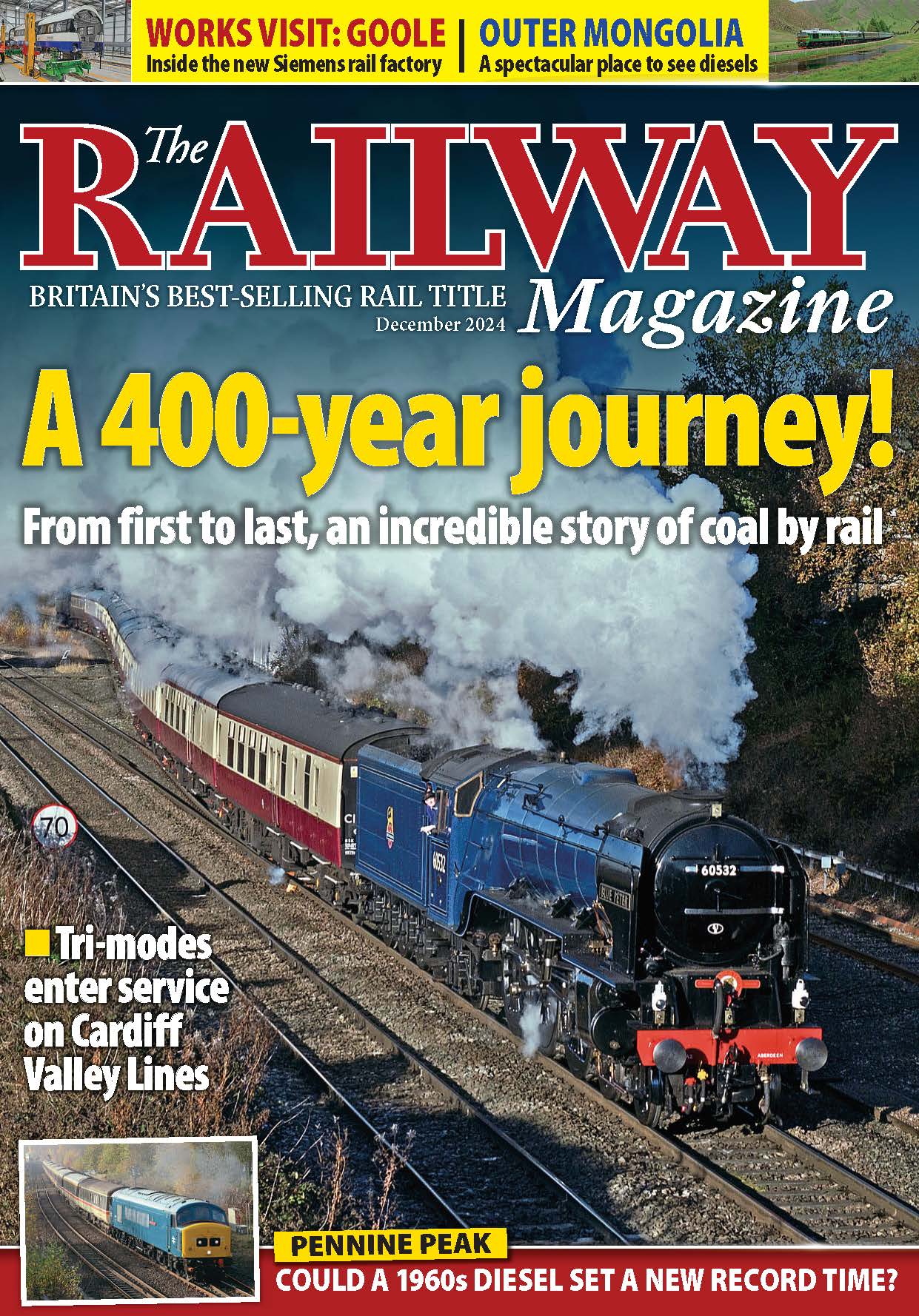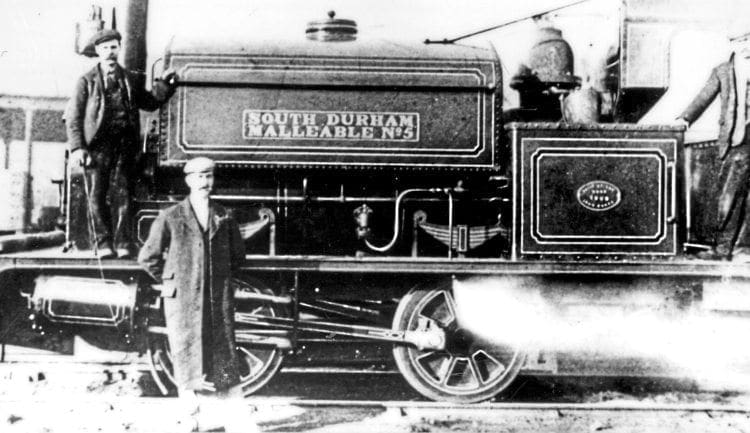
Mark Smithers visits Beamish Museum, one of the North East’s leading regional heritage attractions, featuring several unique railway exhibits.
In the January 2016 issue of The Railway Magazine, my feature looked in detail at the Tanfield Railway and its important collection of industrial locomotives, many of which have a strong connection with the north-east of England.
Indeed, Marley Hill Shed, now part of the Tanfield Railway, was originally acquired by Beamish Museum as a store for its own railway items. It is therefore important to complete the picture and look at the railway attractions at Beamish Museum.
Monthly Subscription: Enjoy more Railway Magazine reading each month with free delivery to you door, and access to over 100 years in the archive, all for just £5.35 per month.
Click here to subscribe & save
Unlike the Tanfield system, which is a railway preservation venue pure and simple, the railways at Beamish Museum are part of a much larger and more generally focused entity.
The history of Beamish Museum goes back to 1958 when the then director of Bowes Museum, the late Dr Frank Atkinson, prepared a report for Durham County Council urging the establishment of an open-air museum utilising a collection of everyday artefacts of disappearing local industries and communities. The intention was to create a ‘living history’ of ordinary life from the region.
Following the establishment of a working party some eight years later, Beamish Hall and its surrounding area – previously in National Coal Board ownership – was selected as the site for the venture, and after the staging of an introductory exhibition in Beamish Hall in 1971, the new museum was opened to the public during 1972.
Today, the museum covers an area of around 350 acres and its main transport artery is a 1½ mile-long circular electric tramway system that features four stops, the southern and northern extremities of which are, respectively, the main entrance and the ‘Town’. The collecting policy for exhibits from the start of the venture was an inclusive one, however, and given the importance of railways – both main line and industrial – to the region’s history, it was no surprise that railway material made its first appearance on-site at a very early stage.
From the point of view of fixed infrastructure, the first major railway items arrived on-site soon after the museum’s official opening, and the earliest arrival was the passenger station, now to be found on the north side of the Town. This building, Rowley station, began life in 1873 when it was erected by the North Eastern Railway at what had been opened (under Stockton & Darlington Railway auspices) in 1845 as Cold Rowley station on the Blackhill to Darlington stretch of the S&DR system.

Following the end of BR operation on May 1, 1969, and the conclusion of track-lifting operations during the following year, the building lay derelict until it was transported to Beamish in dismantled form, being re-erected on site. It was formally opened in July 1976 by the then Poet Laureate Sir John Betjeman.
Other architectural items of railway importance have been added to the site during the intervening years to create the atmosphere of a typical small NER station as it would have appeared in 1913. The signalbox was recovered from Carr House East, near Boldon, and although it is equipped with a lever frame, this is for display purposes only as the points on the running line, some quarter mile in length and skirting the north side of the Town, are worked from trackside levers.
Footbridge

There is no other station on the running line and passenger working starts and ends at Rowley. Most of the trackwork in the immediate vicinity of Rowley station is bounded to the west by a cast iron footbridge recovered from Dunston and to the east by a wrought iron specimen salvaged from Howden-le-Wear.
In the station area next to the cast iron footbridge the goods shed can be found. This was formerly sited at Alnwick and it sits on a wedge-shaped platform. The building possesses a covered platform for rail-to-road transfer of goods in addition to a crane for trans-shipment between railway vehicles.
One of the most important items to be transported by rail during the period represented by the reconstructed station area was of course, coal, and this was handled by a special coal drop.
The example on display at Beamish was previously at West Boldon and it now stands in a reconstructed coal yard, served by a spur from one of the goods shed roads, and which also contains a weighbridge (from Glanton) and an office recovered from Hexham.
The building, which proudly proclaims itself as ‘The Beamish Waggon and Iron Works Established 1857’, is in reality the regional museum’s store and equipped with two access sidings used for the maintenance of equipment associated with the railway.
One locomotive that will always be associated with the early days of railway operation at Beamish is former NER ‘C’ class 0-6-0 No. 576 (temporarily re-classified ‘C1’ by the NER and ‘J21’ by the LNER and re-numbered 5033, later becoming BR 65033).
This locomotive, as is well known, was built as one of a 201-strong class constructed between 1886 and 1895 to a Worsdell design, some 171 of which were constructed as two-cylinder Von Borries compounds, and all of which were originally built with Joy’s valve gear and slide valves.
No. 576 itself was outshopped from Darlington Works in March 1889 as one of the majority compound locomotives and was rebuilt to a ‘Simple’ in December 1908, at which time larger cylinders (19in diameter as opposed to 18in) with piston valves were fitted, and the Joy valve gear replaced by Stephenson’s.
During a later overhaul, in October 1914, a superheated boiler was fitted, although the engine was to revert to one of ‘saturated’ pattern in 1956, having survived the threat of scrapping in 1939 owing to the demands of wartime emergencies.
The engine was withdrawn as the last survivor of its class in service from South Blyth shed on April 23, 1962, and was stored at Darlington Works.
It was initially listed for the National Collection, during which time it is believed to have received the boiler from fellow class member 65099, which had been withdrawn some six months earlier due to cracked mainframes.
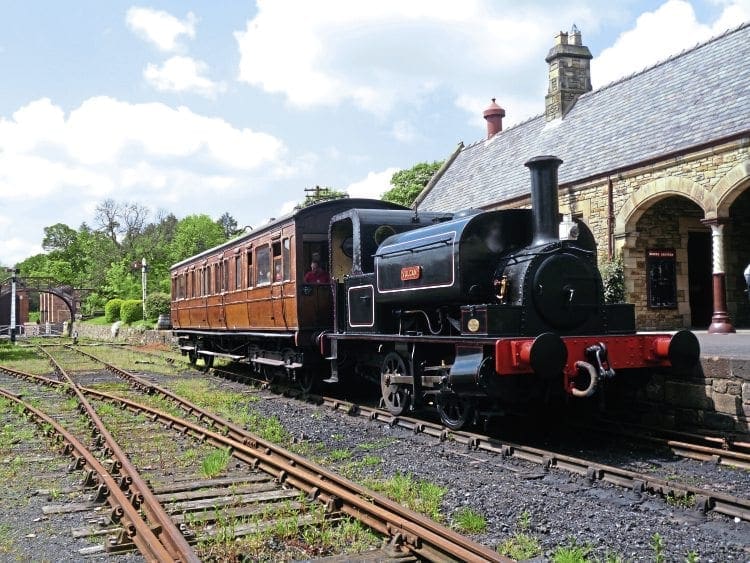
However, No. 65033 was later removed from the National Collection list, owing to its non-original mechanical condition and then stood in great danger of suffering the fate that befell ex-Highland Railway 4-4-0 Ben Alder.
Fortunately, some four days before No. 65033 was to have been removed for scrap, it was saved by Dr Atkinson and moved initially to Consett Steelworks, before being transferred to Marley Hill, where restoration to working order, in NER guise, was undertaken.
The newly restored loco moved to Beamish in 1975, took its part in the opening festivities for Rowley station and remained in working order until December 1983.
Fundraising
In the summer of 2003, the locomotive met up with another 0-6-0 of Worsdell design, visiting ex-GER ‘J15’ class No. 65462 (now restored as ‘Y14’ class No. 564), as part of a fundraising drive for its restoration to working order, which was sadly not to happen under Beamish auspices.
Following a period of storage, the engine went first to the Flour Mill workshops and then, in 2007, to the North Norfolk Railway, before it was transferred to the ownership of the Locomotive Conservation & Learning Trust in March 2009, and moved during the following year to NRMs ‘Locomotion’ at Shildon.
Now once again in BR guise as No. 65033, it awaits the day when the provision of suitable resources permit a return to working order to take place.
Rolling stock associated with the ‘Rowley’ line – both passenger and goods – is mainly of NER origin, although passenger operation is currently dependent upon a Royal Saloon vehicle of 1898 vintage, hired from the Furness Railway Trust.
Over the years, the passenger running line has seen several visiting locomotives, including the North Norfolk Railway-based LNER ‘Y7’ 0-4-0T No. 985, along with its elder classmate NER No. 1310 from the Middleton Railway.
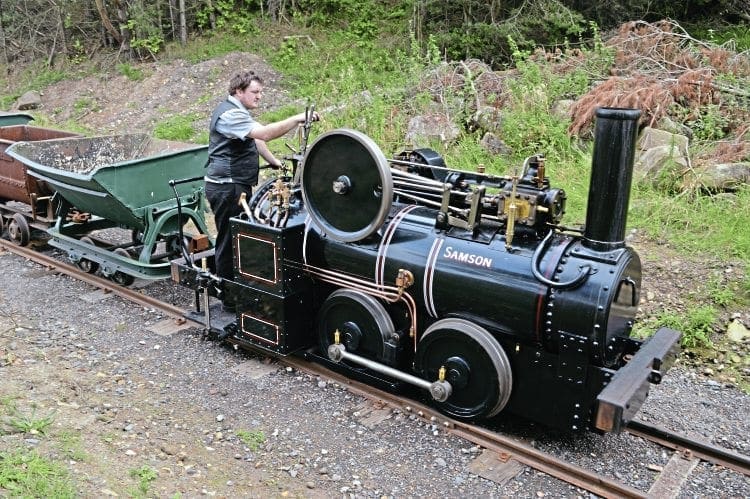
However, the need for a permanently resident purpose-built passenger locomotive on site eventually prompted the purchase, and repatriation from Fort Steele in Canada, in 2010-11, of the Duke of Sutherland’s 1895 vintage Sharp, Stewart 0-4-4T Dunrobin and its accompanying 1909-vintage day saloon carriage Highland Railway No. 58A (currently nearing completion of restoration for operation with the loco).
Dunrobin is currently in the latter stages of a major overhaul, most of which has been carried out at the Severn Valley Railway’s workshops at Bridgnorth. Work has included extensive boiler and mainframe repairs and the provision of a new cylinder block (which has required the measuring of the old one, the design and production of new patterns and the casting of the replacement in two halves by Timson’s of Kettering).
Colliery landscape
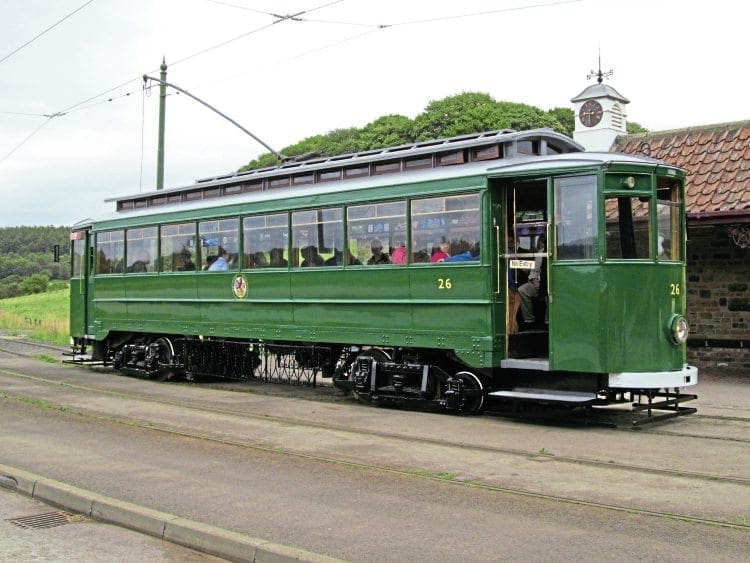
One of the most important features of Beamish Museum is the reconstructed colliery, and as is to be expected, this area of the site contains much of interest from the railway point of view.
The colliery landscape is dominated by a winding engine and tower salvaged from NCB Chophill colliery (closed 1962) and whose transfer to Beamish was completed in 1976. The winding engine was built by J & G Joicey of Newcastle in 1855 and remained in revenue-earning service for more than a century.
The standard gauge railway is another 1970s installation and its sidings were once connected to the passenger railway further north, but this was severed by the completion of the electric tramway ‘circle’ by 1993.
The colliery’s standard gauge railway has been graced over the years by a representative selection of interesting industrial locomotives, both permanent residents of the museum and visitors.
One of the most important items is Newcastle, a variant of the standard Manning Wardle ‘M’ class (13in inside cylinder) 0-6-0ST (works No. 1532), originally supplied new to the Midland Coal, Coke and Iron Co Ltd at Apedale Ironworks, Staffordshire, in 1901.
After a varied career – including its final spell of ordinary service on the Wissington Light Railway – it had hitherto been stored on a Hertfordshire farm (following a short spell of operation in the early 1980s) until arrival at Beamish in March 2012.
Although restoration of Newcastle to working order will not begin until Dunrobin is returned to service, the engine is not only representative of local colliery practice, but also of light railways, hence it would prove an asset to both the ‘Rowley’ and Colliery lines and as a ‘roving ambassador’ for Beamish during visits to such venues as the Middleton Railway or the Mid-Suffolk Light Railway, all of which have locomotives of related interest as a consequence of maker, previous association or both.
Newcastle lost its original ‘double boss’ wheel centres as a consequence of the fitting of replacements at some stage during its career, but earlier surviving representative Manning, Wardle ‘M’ class components (namely the cylinder block, centre axle and one ‘double boss’ wheel centre) from former Silverdale Colliery locomotive (254 of 1868) came into the museum’s possession at a later stage in 2012, having formed part of a stationary engine, and it is intended to put these on display at a later stage.
Historic locomotives
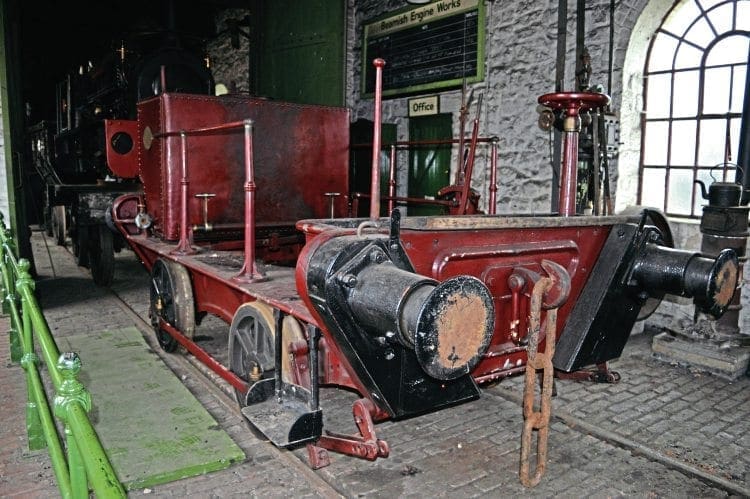
Newcastle’s presence on site illustrates an important point: it is not necessarily the case that any one locomotive in the collection would be exclusively relevant to a ‘main line’ (or even passenger) or ‘industrial’ context.
The sad loss to Beamish from this point of view was the failure during the 1950s and 1960s, when historic locomotives were earmarked for the National Collection, to recognise the importance of more former main line locomotives that had found their way into industrial service in the North East.
The four specimens that immediately come to mind are former NER ‘93’ class double-framed 0-6-0 No. 658. It was scrapped at Seaton Delaval in February 1959, in spite of the fact that its importance had been highlighted in the Stephenson Locomotive Society as the last six-coupled ‘double framer’ in service; NER ‘964’ class ‘long boiler’ 0-6-0STs Milo and Mars, which survived at Seaham Harbour until 1963 as the last Fletcher-era locomotives in industrial use; and the last surviving former Barry Railway locomotive, ‘F’ class 0-6-0ST No. 132 (later GWR No. 747), which latterly worked at Weetslade Colliery until scrapped in April 1965.
Attempts have been made during the intervening years to at least excuse the inaction of the relevant authorities in these cases, but there was no justification for not saving at least one of these historic locomotives, which would have been an invaluable asset to the Beamish Collection, had it been present on loan today.
Local manufacturers are well represented among the smaller standard gauge locomotives: 0-4-0ST Malleable No. 5, while officially credited to Stockton Ironworks, appears from close examination of its chassis area to be of earlier origin, possibly Joicey, although it has undergone much modification over the years.
The Thornably-based manufacturer Head, Wrightson & Co is represented at Beamish by two of its vertical-boiler products.
The earlier of these, known as Coffee Pot, was built in 1871 and supplied via the firm’s London outlet (T H Head) at a cost of £435 to Dorking Greystone Lime Co’s Quarry at Betchworth, in Surrey, where it remained in service until 1952.
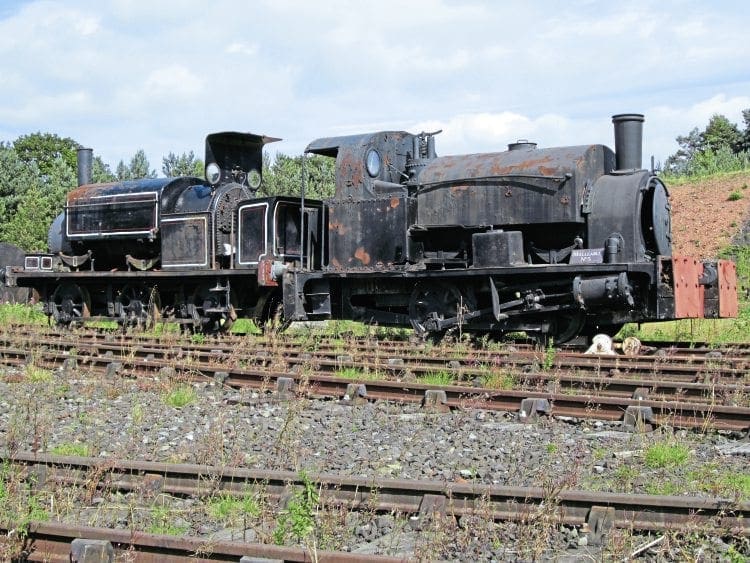
The locomotive was re-purchased by the manufacturer’s successor-in-title, Head Wrightson Teesdale Ltd, in September 1960. Here, along with the former Seaham Harbour Nos. 16 and 17 (Head Wrightson 21 of 1870 and 33 of 1873), the engine was displayed in such a manner that it could be demonstrated running on compressed air, until it was transferred to British Steel Corporation’s Consett site before coming to Beamish.
During its early days at Beamish, Coffee Pot was steamed largely in the external condition that it arrived from Consett, save for a repaint in a green & black colour scheme, but during an overhaul from 1982-84, the roof and handrail additions fitted at Betchworth were reinstated and a maroon livery adopted.
Remedial work
By the early 1990s another overhaul was required. This began with the removal of the boiler, roof and tank and the cleaning of the frames of the engine in later 2006, and during the ensuing three-and-a-half years, further work included general dismantling; the design and construction of a new boiler built by Israel Newton of Bradford; the provision of new slide valves; remedial work on the valve gear and reassembly – much of which had to be undertaken at Newton’s workshops owing to the fact that the cylinders and crankshaft bearings on this geared engine are secured to the boiler by means of brackets – before re-entry into service, which took place in June 2010. Following trials came the discovery that the cylinder bores were of different sizes and that new pistons were required.
During its most recent spell of activity, Coffee Pot has seen visits from Bluebell Railway-based former workmate Fletcher, Jennings 0-4-0T Captain Baxter in 2011 and 2012, and returned to service for the 2017 Great North Steam Fair following a visit of its boiler to Bridgnorth for re-tubing.
Seaham Harbour No. 17 also found its way to Beamish following the demise of Head Wrightson, but it requires extensive restoration in order to put it into a prime operational condition (including the return of its all-over body and a lost section of its mainframes), although it did pay a visit to the site of its former workplace, in company with a representative chaldron wagon, on June 22, 2014.

A major icon of the industrial locomotive collection at Beamish is Seaham Harbour No. 18. This locomotive was (as with Nos. 16 and 17) originally built for the Londonderry Railway and transferred to the Seaham Harbour & Dock Co around 1889.
It started life in 1877 as the only original surviving locomotive from the works of Stephen Lewin of Poole (works No. 683). Originally built as a 0-4-0WT, it was converted successively at Seaham to the 0-4-0WT+T and 0-4-0ST configurations, prior to withdrawal from service, with boiler tube and other problems in 1969, being presented to Beamish in 1975.
Restoration of No. 18 to working order was originally carried out by Laing’s of Hartlepool, and it was decided as far as possible to re-create the engine’s original appearance, with much of the work undertaken consisting of fabrication of new platework.
Sadly, not only were important items from the 1936 rebuild, such as the distinctive chimney and saddle tank, lost at this stage, but important mechanical problems, such as the limited life remaining in the boiler, distortion to the mainframes at the leading end (resulting from the 1936 removal of the well tank), and ‘dishing’ of the steam chest port faces were not resolved.
Nonetheless, the locomotive made its working preservation debut in 1977 and remained active in this form until taken out of use once more in the early 1980s.
Wagonway
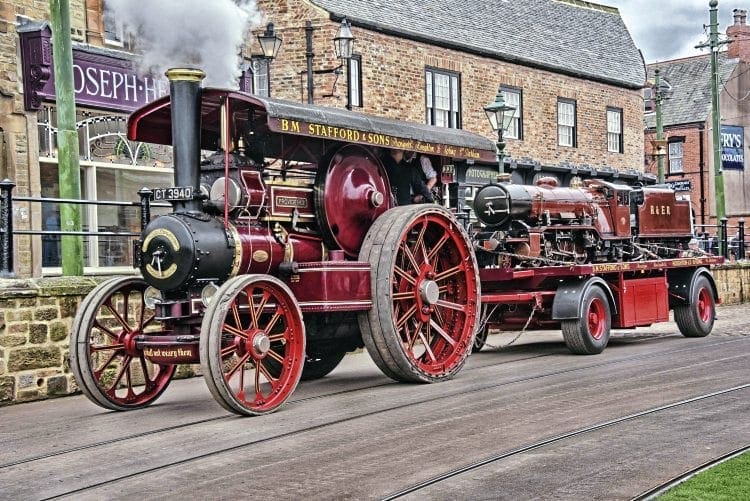
Early attempts were made to resuscitate No. 18 during the 1990s, including the fitting of a new boiler barrel, but it was not until after Coffee Pot had returned to service in 2010 that work could begin in earnest on No. 18.
This time it was decided to restore the locomotive to its 1936 condition, addressing the difficulties left unresolved in the 1970s and in consequence much of the locomotive above footplate level needed total renewal, including new platework manufactured by the Statfold Barn workshops.
Although the bulk of the recent restoration had been completed by 2012, some persistent problems, such as modifications to injectors and clack valves, delayed the locomotive’s return to normal service until the latter part of 2014.
Nonetheless, today it makes a fine sight in steam, especially when coupled to a representative selection of restored chaldron wagons of the type that it regularly hauled during its days at Seaham Harbour and which make up much of the colliery system’s rolling stock collection.
As part of Beamish Museum’s desire to represent the steam railways of the first half of the 19th century, Pockerley Waggonway, located close to the main entrance, was opened on the site in 2001 and its main hub of activity is the Great Shed (complete with ‘1825’ date), based on Timothy Hackworth’s erecting shop at Shildon and embodying some material from Robert Stephenson’s workshops in Newcastle-upon-Tyne.
At the other end of the Pockerley Waggonway is a representation of the head of a ‘Gin Pit’, which would have relied on horses as the motive power for lifting and lowering men and materials prior to the adoption of steam as the main power source for such work.
As early as 1975 Locomotion Enterprises completed a replica for Beamish of the 1825 Locomotion No. 1 to celebrate the 150th anniversary of the opening of the Stockton & Darlington Railway, and this is now normally to be found based at the Waggonway.
This was joined during the Pockerley system’s opening year by a replica of the Wallsend Waggonway’s 1815 vintage 0-6-0 geared locomotive Steam Elephant. The inspiration for this locomotive was a design now attributed to John Buddle and William Chapman, but its arrangement of cylinders and geared transmission appears to owe much, albeit without the rack mechanism, to the design of Matthew Murray’s locomotives for the Middleton Railway introduced in 1812.
The involvement of Alan Keef in the construction of Steam Elephant was to be repeated during construction of the next Pockerley replica, namely William Hedley’s Puffing Billy. This entered service in 2005, and the three replicas have all paid visits to other railway heritage venues during their operational careers.
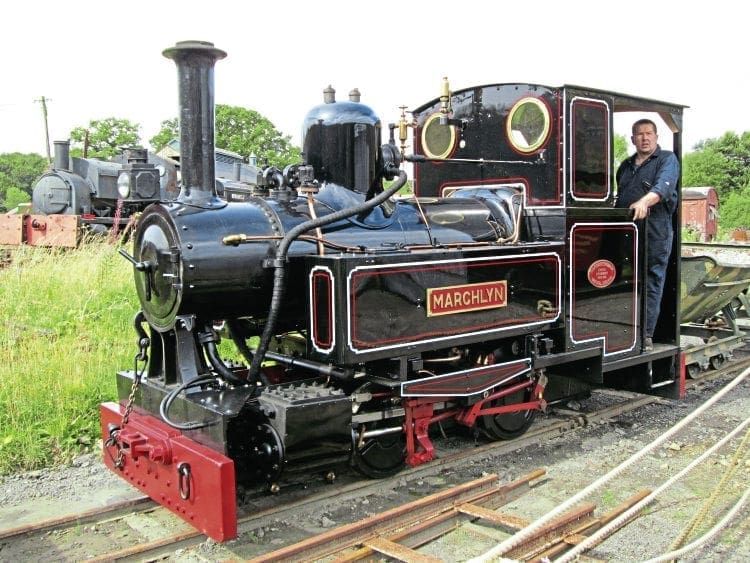
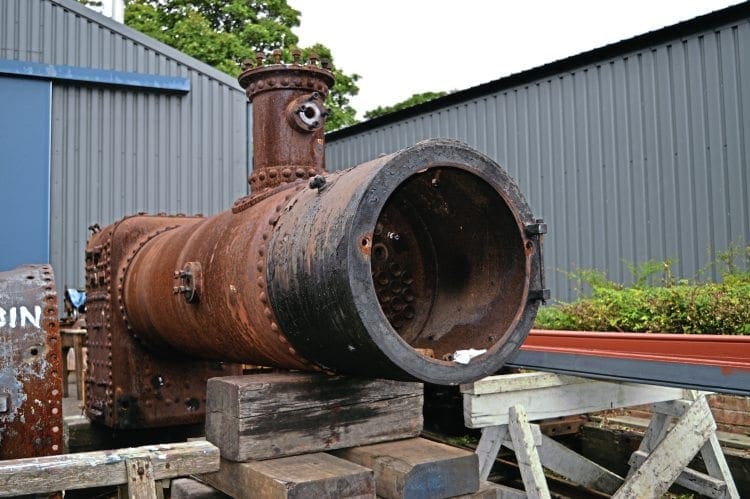
The Pockerley-based rolling stock includes replicas of Stockton & Darlington Railway passenger vehicles. The one ‘original’ locomotive currently to be found in the Great Shed is the 1851 or 1852-built Hetton Colliery 0-4-0 locomotive Hetton Lyon of archaic design (albeit mitigated by an 1877 rebuild) on loan from the National Railway Museum.
Although the electric tramway is not strictly within the scope of the present feature, one of its trams once belonged to the Grimsby & Immingham Light Railway and has run at Beamish in its BR guise as No. 26. Another item of associated railway interest is Leyland Cub Crosville bus No. 716.
The Crosville Bus Co was bought by the LMSR for £400,000 in February 1929 and in consequence No. 716 was finished in the railway company’s livery when new in 1933. At the time of writing, restoration of this vehicle at Historic Vehicle Restoration of Byfleet, Surrey is well advanced and when complete will provide an accessible means of transport around the road system associated with the electric tramway for visitors to Beamish.
Demonstration line
The value of a narrow gauge railway as an attraction at Beamish did not go unnoticed in recent years, especially as they were found at several collieries and other industrial users in the region, and following the rescue of the remains of a snowplough from the site of the 1ft 10in Weardale Lead Company’s system at Rookhope in 2009 (which has facilitated the building of a replica), thoughts turned to building a representative system, to the more popular gauge of 2ft, close to the standard gauge colliery system.
A demonstration line of this gauge, employing Wilbrighton Wagon Works 0-4-0VBT Paddy
(2 of 2007) made its appearance at the September 2009 Great North Steam Fair.
During the following year, 2ft-gauge ‘Jubilee’ track was once again in place for the visit of Kerr, Stuart ‘Wrens’ No. 3114 (of 1918) and Peter Pan (4256 of 1922 ), and by 2012 construction of a more permanent system, still employing ‘Jubilee’ track, was well underway.
During the same year, two suitable locomotives with a strong regional connection were repatriated from the USA (where they had been since 1965) and placed on loan to Beamish. These were Ogwen (Avonside 2066 of 1933) and Glyder (Barclay 1994 of 1931), which began life as Durham and Grey, respectively, working on the Burnhope Dam contract before being sold in 1936 and 1938, respectively, to the Penrhyn Quarry system in North Wales.
Both were initially placed on loan in ‘as-received’ condition (apart from cleaning work) to Beamish, but Ogwen moved on to pastures new in 2015, although Glyder is being currently restored by agreement with owner Graham Morris and re-gauged from 1ft 10¾in to nominal 2ft for future operation at Beamish.
The narrow gauge line has been extended during more recent years, with a triangle and water tower being added, and many well-known locos have visited this railway, including Lilla, Britomart, Jennie, GP 39 and Hugh Napier, while another ex-Penrhyn locomotive repatriated from the USA – Hunslet ‘Port’ class 0-4-0ST Edward Sholto (996 of 1909) – has been resident on-site on loan from owners Andrew and Margaret Neale since October 2012, although it is currently due for re-tubing.
The ‘big story’ for Beamish’s narrow gauge railway in recent times has, of course, been the building of the new locomotive, Samson. This replica was inspired by another Lewin locomotive, built in 1874 for the London Lead Company’s Cornish Hush Mine at Whitfield Brow, near Frosterley, County Durham.
The original Samson was an ‘overtype’ single-cylinder, rod-coupled geared locomotive of 1ft 10in gauge and weighing a mere 2.6 tons in working order, which is thought to have disappeared for scrap around 1904. Only one known photograph exists of the locomotive, together with descriptions and engravings in professional journals of the period.
Nonetheless, armed with the information that was available, together with the experience gained particularly by David Young during No. 18’s restoration, work began on the construction of a new Samson (incorporating certain detail differences from the original) with the production of certain drawings and patterns (including for the cylinder and flywheel) during the latter part of 2012.

Much of the construction work on the locomotive took place in Beamish’s Regional Heritage Engineering Centre, although some work was contracted out, including final riveting of the frames and boiler (carried out at Bridgnorth); the machining of the primary drive pinion and transmission gearing (undertaken locally); and assembly of the wheelsets (undertaken at Statfold Barn).
The loco ‘took its first breath’ when the cylinder, valve and crankshaft assembly was successfully tested with compressed air in May 2014. Full running trials began in April 2016, with the official ‘launch’ taking place nearly six months later.
Performance of the locomotive has been generally satisfactory, but there were some ‘teething troubles’, including the tendency of the engine to be a little ‘rear-end heavy’. Operational experience has also highlighted the need for a purpose-built tender, and one based on those used by the 18in-gauge Horwich Works locos is nearing completion.
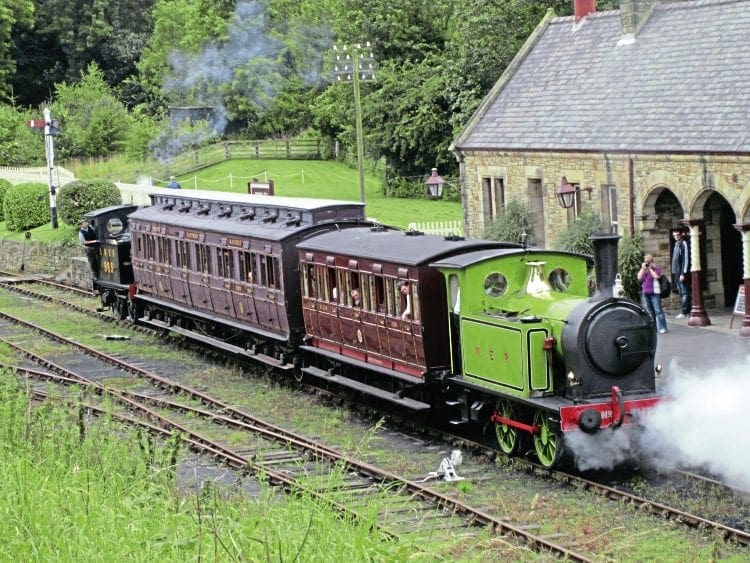
There is always plenty to interest the dedicated railway enthusiast at Beamish Museum and with the support of the extensive restoration facilities available in the museum’s Regional Heritage Engineering Centre and Regional Museums Store, there will be many new and exciting projects undertaken on site during the years to come. ■
The Railway Magazine Archive
Access to The Railway Magazine digital archive online, on your computer, tablet, and smartphone. The archive is now complete – with 122 years of back issues available, that’s 140,000 pages of your favourite rail news magazine.
The archive is available to subscribers of The Railway Magazine, and can be purchased as an add-on for just £24 per year. Existing subscribers should click the Add Archive button above, or call 01507 529529 – you will need your subscription details to hand. Follow @railwayarchive on Twitter.



